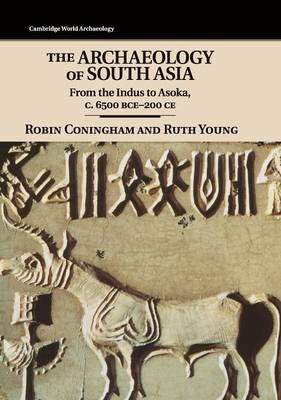
The Archaeology of South Asia
Cambridge University Press (Verlag)
978-0-521-84697-4 (ISBN)
This book offers a critical synthesis of the archaeology of South Asia from the Neolithic period (c.6500 BCE), when domestication began, to the spread of Buddhism accompanying the Mauryan Emperor Asoka's reign (third century BCE). The authors examine the growth and character of the Indus civilisation, with its town planning, sophisticated drainage systems, vast cities and international trade. They also consider the strong cultural links between the Indus civilisation and the second, later period of South Asian urbanism which began in the first millennium BCE and developed through the early first millennium CE. In addition to examining the evidence for emerging urban complexity, this book gives equal weight to interactions between rural and urban communities across South Asia and considers the critical roles played by rural areas in social and economic development. The authors explore how narratives of continuity and transformation have been formulated in analyses of South Asia's Prehistoric and Early Historic archaeological record.
Robin Coningham is UNESCO Chair in Archaeological Ethics and Practice in Cultural Heritage at the University of Durham. He has participated in over fifteen UNESCO missions and currently co-directs UNESCO's excavations in Nepal at Tilaurakot and Lumbini, the birthplace of the Buddha. He has published eight books and over eighty papers and chapters. Ruth Young is Senior Lecturer at the School of Archaeology and Ancient History at the University of Leicester. She has published in journals such as Antiquity, the International Journal of Heritage Studies, the International Journal of Historical Archaeology, Historical Archaeology, World Archaeology and many others. She is also writing a monograph on her work in northern Pakistan.
Part I. The Context: 1. Introduction and definitions; 2. Environment and culture: South Asia's environmental, linguistic and religious patterns; 3. Histories of South Asian archaeology; Part II. The Indus Valley Tradition c.6500–1900 BCE: 4. Food producers: multiple Neolithics (c.6500–2000 BCE); 5. Regionalisation and differentiated communities (c.5000–2600 BCE); 6. An era of integration: the Indus civilisation (c.2600–1900 BCE); 7. Localisation: transformations of a system (c.1900–1200 BCE); Part III. The Early Historic Tradition (c.1900–200 BCE): 8. South Asia: transitions and continuities (c.1900–1200 BCE); 9. The re-emergence of regional differentiation (c.1200–600 BCE); 10. Reintegration: towards an early historic world (c.600–250 BCE); 11. The Mauryans and the Asokan ideal (c.321–185 BCE); Part IV. Conclusions: 12. Conclusions and challenges.
| Reihe/Serie | Cambridge World Archaeology |
|---|---|
| Zusatzinfo | 28 Maps; 105 Halftones, black and white; 73 Line drawings, black and white |
| Verlagsort | Cambridge |
| Sprache | englisch |
| Maße | 184 x 261 mm |
| Gewicht | 1300 g |
| Themenwelt | Geisteswissenschaften ► Archäologie |
| ISBN-10 | 0-521-84697-8 / 0521846978 |
| ISBN-13 | 978-0-521-84697-4 / 9780521846974 |
| Zustand | Neuware |
| Informationen gemäß Produktsicherheitsverordnung (GPSR) | |
| Haben Sie eine Frage zum Produkt? |
aus dem Bereich


